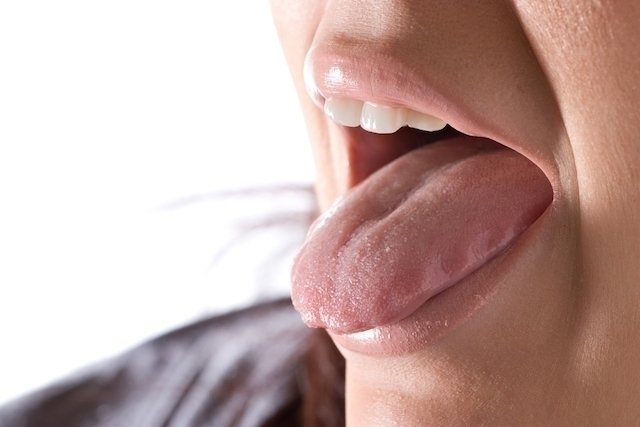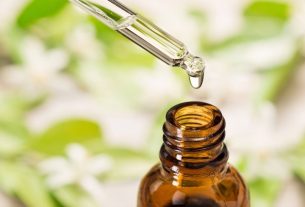Treatment for dry mouth can be carried out with home measures, such as drinking tea or other liquids or eating certain foods, which help to hydrate the oral mucosa and act by stimulating the production of saliva, preventing dehydration.
If these measures are not enough to treat the problem, it is best to consult a doctor to find out if there is a disease that is causing this symptom, so that a specific and more appropriate treatment can be carried out. In these cases, these natural remedies can also be of good help as a complement to treatment:

1. Eating acidic foods
Eating foods rich in ascorbic acid, malic acid or citric acid stimulates saliva production, reducing the feeling of dry mouth. Some of the foods with these properties are lemon, orange, apple and pear, for example.
In addition to these foods, gnawing on raw carrots daily also helps reduce dry mouth.
2. Drink chamomile or ginger tea
Great tea options for dry mouth are ginger or chamomile tea, which should be taken in small sips, several times a day. These plants stimulate saliva production and also have a beneficial effect on digestion difficulties, which can be a problem associated with dry mouth.
To prepare chamomile tea, simply add 2 teaspoons of dried chamomile flowers, add to a cup of boiling water and strain. To prepare ginger tea, simply place about 2 cm of ginger root and 1L of water in a pan and let it boil for about 10 minutes. When warm, strain and drink several times during the day.
3. Sleep with a humidifier
Having a humidifier at home, preferably turned on at night, reduces the feeling of dry mouth, as the environment becomes more humid. Also, another thing that can help is sleeping with your mouth closed and breathing through your nose.
4. Drink lots of water
Drinking water or sugar-free drinks frequently helps maintain hydration in the oral cavity and increase saliva production. However, some drinks should be avoided, such as soft drinks, alcoholic drinks or caffeinated drinks, such as black tea or coffee, which increase dehydration.
Furthermore, sucking on pieces of ice is also a good option, as it helps keep the oral mucosa hydrated.
5. Chewing gum
Chewing sugar-free gum, preferably with acidic flavors, helps stimulate saliva production. You should also choose gum with xylitol in its composition, because this substance contributes to mouth hydration.
If these natural methods are not enough to improve the symptoms, the person should go to the doctor to understand what could be causing the problem. Find out the main causes of dry mouth.
In addition to adopting these measures, it is also important to avoid very salty foods, mouthwashes that contain alcohol, avoid cigarettes and avoid medications such as antihistamines or decongestants that make the mouth even drier.
Bibliography
- SIMÃO, Ana Rita Filipe. EFFECT OF INGESTION OF A GINGER INFUSION ON SALIVARY FLOW, DEGREE OF XEROSTOMIA AND QUALITY OF LIFE IN INDIVIDUALS WITH PRIMARY SJÖGREN’S SYNDROME FROM THE PORTUGUESE INSTITUTE OF RHEUMATOLOGY. MASTERS IN CLINICAL NUTRITION, 2016. INSTITUTE SUPERIOR OF HEALTH SCIENCES EGAS MONIZ.
- SILVA, Iomara Jossierica of Oliveira et al. al.. HYPOSALIVATION • etiology, diagnosis and treatment •. Bahiana Dentistry Magazine. 7. 2; 140-146, 2016
- GIAFFERIS, Rosana Barbosa Leal et. to the.. THERAPEUTIC STRATEGIES AVAILABLE FOR XEROSTOMIA AND HYPOSALIVATION IN PATIENTS IRADIATED TO THE HEAD AND NECK: MANUAL FOR HEALTHCARE PROFESSIONALS. UNINGÁ Magazine. 54. 1; 45-58, 2017
- COIMBRA, Filipe. Xerostomia. Etiology and Treatment.. Portuguese Journal of Stomatology, Dental Medicine and Maxillofacial Surgery. 50. 3; 2009
- UNIVERSITY OF BRASILIA – UNB PHARMACY COURSE. The use of herbal medicines and medicinal plants by diabetic patients. 2017. Available at: <http://bdm.unb.br/bitstream/10483/17579/1/2017_LiviaGumieriVieira.pdf>. Accessed on 08 Jul 2019
- MAYOCLINIC. Dry mouth. Disponível em: <https://www.mayoclinic.org/diseases-conditions/dry-mouth/diagnosis-treatment/drc-20356052>. Acesso em 08 jul 2019

Sign up for our newsletter and stay up to date with exclusive news
that can transform your routine!
Warning: Undefined array key "title" in /home/storelat/public_html/wp-content/plugins/link-whisper-premium/templates/frontend/related-posts.php on line 12
Warning: Undefined array key "title_tag" in /home/storelat/public_html/wp-content/plugins/link-whisper-premium/templates/frontend/related-posts.php on line 13



